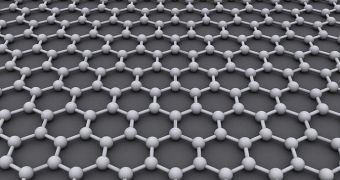With the 2010 Nobel Prize in Physics going to graphene research, it stands to reason that this material will start making the object of many studies. But a collaboration of researchers is already ahead of the pack, having started a large-scale investigation into the material earlier this year.
The group's main mission is to identify possibilities and obstacles in the path of bringing graphene applications to the mass market at accessible prices.
Scientists will look as the processes, plans, promises and perils that are associated with producing the material, and will also try and find ways of moving past that.
Graphene is a very peculiar and promising material, experts say, because it has absolutely remarkable physical and chemical properties. It was synthesized for the first time in 2004.
The experts that managed to do that, University of Manchester physicists Andre Geim and Konstantin Novoselov, are the recipients of this year's Nobel Prize in Physics.
The stuff is basically a single-atom-thick, hexagonal carbon compound, which has the same level of conductivity as copper, but is at the same time stronger than steel.
Now, investigators from the Arizona State University, the Georgia Institute of Technology, and the University of Manchester are working together towards the commercialization of graphene.
Center for Nanotechnology in Society (CNS-ASU) experts are working together with Georgia Tech scientist Jan Youtie and UM/Georgia Tech expert Philip Shapira on the new work.
The studies are being conducted at the Comparative Research and Innovation Approaches of Graphene Centers. Analyzing publications, patents, funding, and corporate activities in areas having to do with graphene is a part of the research.
All those involved in this initiative are however aware of the fact that some years may pass before graphene is sufficiently researched to allow for the type of mass applications they are envisioning.
But a positive aspect in all this is that the US National Science Foundation decided to extend the funding for CNS-ASU over the next five year, awarding the university with $5+ million.
In addition to graphene research, the group will also be conducting investigations pertaining to the role and function of nanotechnology in today's world.
This emerging field of science is very promising, but it does have its challenges, and the NSF wants to support research centers that can produce objective assessments of the future nanotechnology has.

 14 DAY TRIAL //
14 DAY TRIAL //